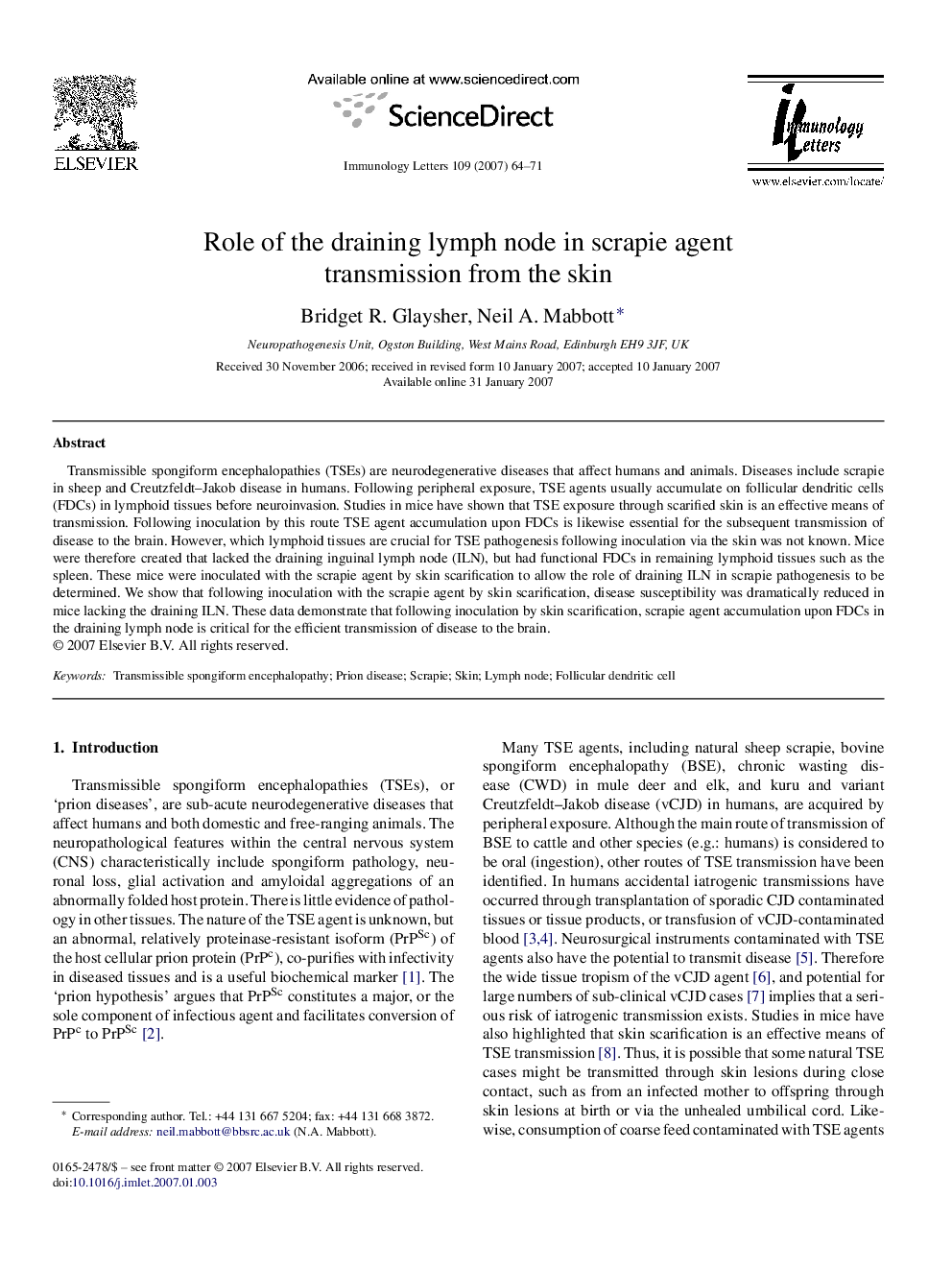| Article ID | Journal | Published Year | Pages | File Type |
|---|---|---|---|---|
| 3356338 | Immunology Letters | 2007 | 8 Pages |
Transmissible spongiform encephalopathies (TSEs) are neurodegenerative diseases that affect humans and animals. Diseases include scrapie in sheep and Creutzfeldt–Jakob disease in humans. Following peripheral exposure, TSE agents usually accumulate on follicular dendritic cells (FDCs) in lymphoid tissues before neuroinvasion. Studies in mice have shown that TSE exposure through scarified skin is an effective means of transmission. Following inoculation by this route TSE agent accumulation upon FDCs is likewise essential for the subsequent transmission of disease to the brain. However, which lymphoid tissues are crucial for TSE pathogenesis following inoculation via the skin was not known. Mice were therefore created that lacked the draining inguinal lymph node (ILN), but had functional FDCs in remaining lymphoid tissues such as the spleen. These mice were inoculated with the scrapie agent by skin scarification to allow the role of draining ILN in scrapie pathogenesis to be determined. We show that following inoculation with the scrapie agent by skin scarification, disease susceptibility was dramatically reduced in mice lacking the draining ILN. These data demonstrate that following inoculation by skin scarification, scrapie agent accumulation upon FDCs in the draining lymph node is critical for the efficient transmission of disease to the brain.
